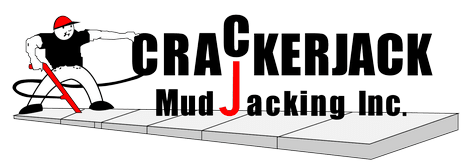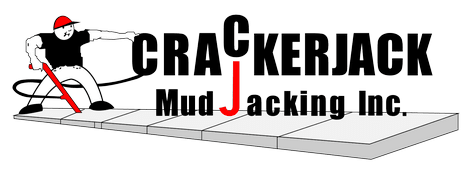Denver Metro:
303-410-7787
Northern Colorado:
970-472-1040
Colorado Springs - South:
719-520-1099
303-410-7787
Northern Colorado:
970-472-1040
Colorado Springs - South:
719-520-1099
Awarded Superior Services
by Angie's List!
by Angie's List!
Proudly Performing Cement Based Mud Jacking for Over 21 Years.
Denver Metro:
303-410-7787
Northern Colorado:
970-472-1040
Colorado Springs - South:
719-520-1099
303-410-7787
Northern Colorado:
970-472-1040
Colorado Springs - South:
719-520-1099
MUDJACKING VS POLYURETHANE FOAM
WHY CRACKERJACK MUD JACKING DOES NOT USE POLYURETHANE FOAM
At Crackerkjack Mud Jacking, we do not use polyurethane
foam. We are often asked why. The traditional sand & concrete slurry method
of mud jacking is tried and true. It has been in use for Over 60 years. There is always the temptation to use a newer or “latest and
greatest” method when one comes along in any field. We were tempted to change
methods, as equipment used for polyurethane is much cheaper and far easier to
transport. Before making the transition, we did some research, since we
do not have a chemist or environmental expert on staff, we had to rely on
government agencies and the industry professionals to reach a decision. Below, please find the statement of facts as provided by the
Environmental Protection Agency and other experts. Direct links to these sites
have been provided so you can read these findings for yourself. At Crackerjack Mud Jacking, we have no opinion on whether
other companies should use this material and method of concrete repair, We Do, However,
feel it would be irresponsible of OUR company to switch to this process, given
the expert evidence that if may be detrimental to the health and safety of our
valued customer and employees.
1. Concrete that has polyurethane attached to it not be accepted at concrete disposed of at toxic waste facility.
http://www.blackjackgroutpumps.com the home owners responsibility to take the polyurethane foam from their home.
2. Exposure to its contaminants toluene
diisocyanate, methylene chloride, hydro eurotoxins and carcinogens causing
cancer in animals
http://nepis.epa.gov
3. According to the EPA
www.epa.gov many potential sources of household pe polyurethane products applied or
manufactured in a home, including polyurethane foam
4. Polyurethane
(even best foam) breaks down in 10-12 years under normal concrete.
5. Potential links between the use of Polyurethane foam and cancer
http://www.ncbi.nlm.nih.gov/pmc/articles/PMC1035481/
Potential links between the use of Polyurethane foam and cancer.
Crackerjack Mud Jacking Inc
3975 E 56th Ave Unit B15
Commerce City, CO 80022
Email:
Opening Hours:
- Mon - Fri
- -
- Sat - Sun
- Closed
Calls Answered 24/7
Payment Options:




Denver Metro: 303-410-7787
Northern Colorado: 970-472-1040
Colorado Springs - South: 719-520-1099
Crackerjack Mudjacking Inc. is not in any way affiliated with Cracker Jack Candies, Frito Lay or Pepsico!
Content, including images, displayed on this website is protected by copyright laws. Downloading, republication, retransmission or reproduction of content on this website is strictly prohibited. Terms of Use
| Privacy Policy




